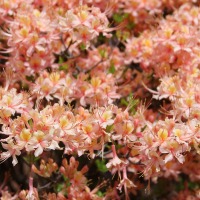Georgia soils are beyond parched and the Georgia Environmental Protection Division has now imposed Level 1 and Level 2 drought restrictions across the state. In some 110 counties, these outdoor watering restrictions are now being enforced to manage and conserve water usage during times like these, when much of central and north Georgia has been in continuous severe drought for more than 20 weeks.
Fall is typically when homeowners make changes to their landscapes, like adding new plants and trees. “We are concerned that people will see the watering restrictions and think they can’t install new plant material,” said Mary Kay Woodworth, executive director of the Georgia Urban Ag Council.
Both Level 1 and 2 drought response allow for irrigation of personal food gardens at any time of day, and new and replanted plants, seeds and turfgrass can be watered for 30 days after installation.
“Conditions are bad now, but (Georgia’s green industry) hopes that normal rainfall will return during the winter months,” Woodworth said. The state’s green industry includes more than 7,000 landscape installation, design and management companies, golf courses, parks and recreation facilities, plant nurseries and garden centers, sod producers, tree care companies, suppliers, consultants and more.
According to a 2015 report in the professional journal Horticulture Technology, the green industry in Georgia generated $4.5 billion in annual sales in 2013 and employed at least 100,000 people.
The state’s water restrictions don’t prohibit green industry companies, and homeowners, from installing new plant materials this fall, the time of year that University of Georgia Cooperative Extension experts deem ideal for putting in new material and pruning existing ones.
“November, December and January are the best times to install plants,” Woodworth said. “Even if went to Level 3 (water restrictions), you are still allowed to water new installations for the first 30 days as needed.”
UGA Extension horticulturists say that fall is the optimal time to install new landscape plants and trees to give them ample time to become established before spring.
Woodworth says that the green industry professionals she works with strive to “conserve water and be efficient” whether there’s a drought or not.
“We are encouraging homeowners to follow the watering rules for their counties,” she said. “You can water new plants for the first 30 days and then you apply water as necessary under Level 2 rules. Water only as needed. If it rains, hold off on supplemental irrigation!”
UGA Extension horticulturists recommend letting plants, not watering rules, determine when plants need water. Watch for signs of moisture stress, such as wilt or rolling leaves. The right time to provide water is the first time you see these signs of plant stress.
The recent cooler temperatures help plants because any water applied is evaporating at a much slower rate, said UGA Extension turfgrass specialist Clint Waltz. UGA Extension experts say the most efficient time to water is in the early morning, when losses from evaporation are less.
Fall isn’t the time to install warm-season turfgrasses. “Drought or not, this is not a time to put down warm-season grasses. Think into next spring,” Waltz said. Current drought conditions will influence how warm-season turfgrasses “green up” in the spring.
Fall is the ideal time to sod or seed cool-season turfgrass species, like tall fescue. But, Waltz says, tall fescue is not well adapted for all parts of Georgia. “I’m not sure adding water to any of the other grasses will do them any good anyway. After a few frost events, it’s pretty much game over for fall turfgrass lawns,” he said.
Drought conditions in October, November and December, from a turfgrass perspective, are not “the worst thing in the world,” he said. Drought could cause turfgrass problems in May, June, July, August and September – the growing season for most Georgia lawns.







